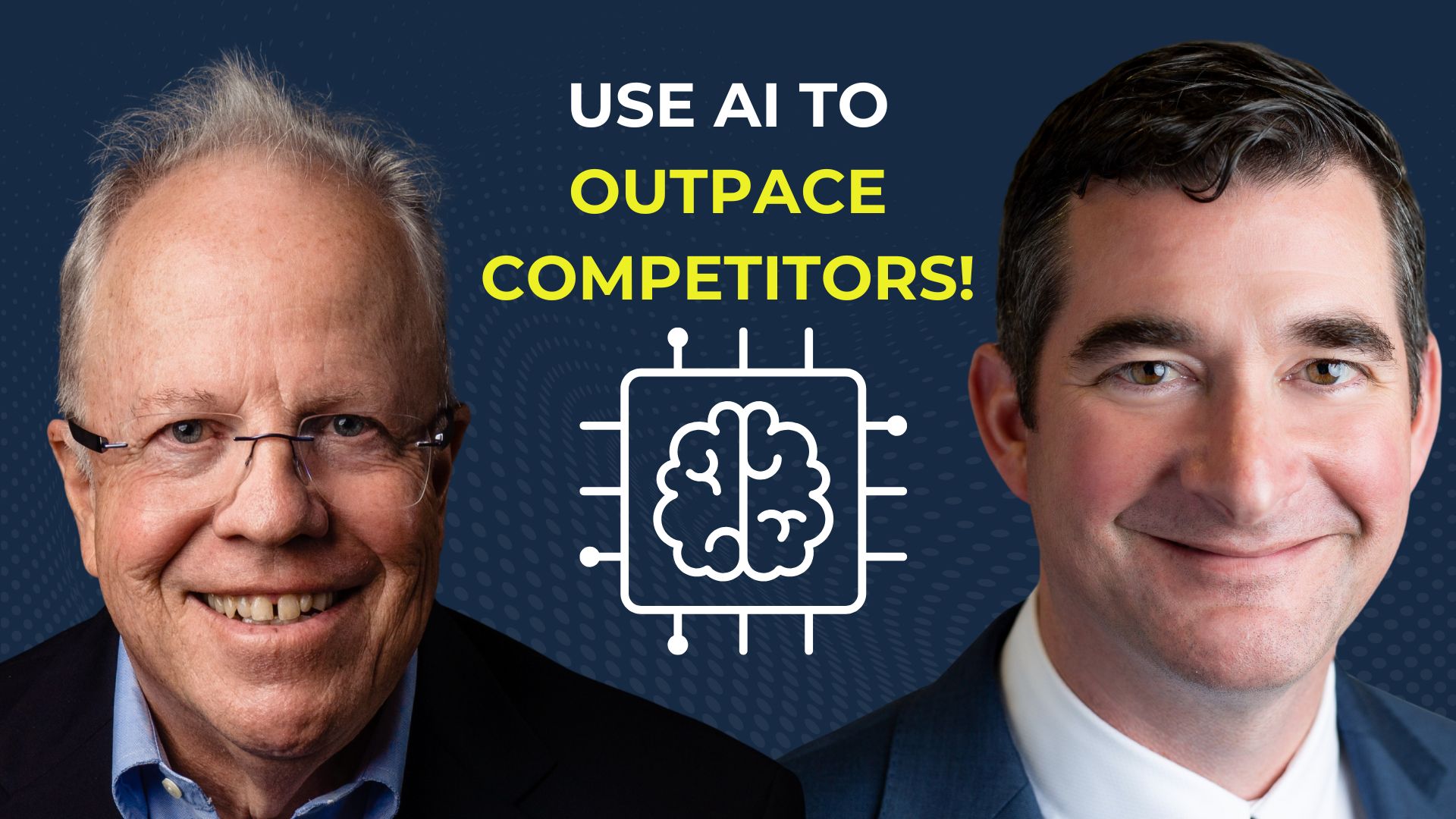How Leaders Can Effectively Apply AI in Business
Artificial Intelligence (AI) is no longer a distant concept—it’s a tool that businesses of all sizes can use today to streamline operations, improve efficiency, and reduce costs. But leveraging AI effectively requires more than just downloading the latest tools. It demands a thoughtful approach, led by strong leadership, to integrate AI into everyday operations and maximize its impact.
In this episode of the 4M Strategies™ podcast, Carl J. Cox, CEO of 40 Strategy and 40 Accounting, and Trey Taylor, a respected business leader and AI advocate, share actionable strategies for leaders looking to harness AI for their organizations. From understanding the difference between generative AI and automation to adopting AI tools that make a tangible impact, Trey provides a practical roadmap for success.
Why AI Matters for Business Leaders
AI has already begun to revolutionize industries by automating repetitive tasks, providing deep insights through data analysis, and enhancing decision-making processes. For businesses, AI offers an opportunity to do more with less—freeing up time and resources for higher-value tasks.
Trey highlights a crucial point: while AI is a powerful tool, its success depends on the leaders who adopt it. Businesses with leaders who understand and embrace AI are better positioned to unlock its potential and gain a competitive edge.
Generative AI vs. Automation: What’s the Difference?
One of the first steps in applying AI effectively is understanding the difference between two key types of AI tools: generative AI and automation.
- Generative AI: Tools like ChatGPT and other AI-powered platforms can create new content, provide creative ideas, and generate insights. For example:
- Drafting detailed reports, proposals, or blog posts.
- Brainstorming marketing ideas or creative strategies.
- Answering complex customer questions in seconds.
- Automation: This type of AI focuses on repetitive, rule-based tasks. Examples include:
- Scheduling meetings using tools like AI calendar assistants.
- Processing data and generating automated invoices.
- Streamlining supply chain management through predictive analytics.
While both types of AI can significantly improve efficiency, they serve different purposes. Generative AI sparks creativity and innovation, while automation eliminates tedious, time-consuming tasks. Knowing when to use each is key to maximizing results.
Practical Applications of AI in Business
AI can be applied across industries and functions to achieve remarkable results. Trey shares several real-world examples of how businesses can leverage AI effectively:
- Saving Time and Increasing Productivity
Time is one of the most valuable resources in any business. AI tools like ChatGPT can handle time-intensive tasks such as drafting emails, summarizing reports, or generating ideas for campaigns. This allows team members to focus on higher-priority tasks that require a human touch. - Reducing Costs Through Automation
By automating repetitive processes, businesses can save on labor costs while improving accuracy. For instance, AI can handle customer service inquiries, process payroll, or manage inventory—reducing the need for manual intervention. - Enhancing Decision-Making with Data-Driven Insights
AI-powered analytics tools provide leaders with actionable insights, enabling them to make informed decisions faster. These tools can analyze sales trends, predict customer behavior, and identify growth opportunities, giving leaders the information they need to stay ahead of the competition. - Improving Customer Experience
AI can personalize the customer experience by tailoring recommendations, automating responses to common inquiries, and ensuring fast, accurate service. This builds trust and loyalty, which are critical for long-term success.
Leadership’s Role in AI Adoption
Trey, author of A CEO Only Does Three Things: Finding Your Focus in the C-Suite, emphasizes that successful AI adoption starts with leadership. Leaders set the tone for how AI is introduced and integrated into the organization. Without strong leadership, AI implementation can feel directionless or even intimidating for employees.
Steps Leaders Should Take:
- Educate Yourself and Your Team: Understand AI’s capabilities and limitations. Leaders who are knowledgeable about AI can guide their teams with confidence.
- Communicate the Benefits Clearly: Show employees how AI can make their jobs easier and more efficient. When team members understand the “why,” they’re more likely to embrace change.
- Start Small: Begin with a few high-impact areas where AI can deliver quick wins. This builds momentum and demonstrates the value of AI across the organization.
- Set Clear Guidelines: Define how AI tools will be used and align them with company goals. This ensures consistency and minimizes risks.
Overcoming Challenges with AI Adoption
Adopting AI isn’t without its challenges. Trey discusses some common obstacles businesses face and offers solutions to overcome them:
- Resistance to Change
Employees may feel uneasy about AI, fearing it will replace their jobs.
Solution: Emphasize that AI is a tool to enhance their work, not replace them. Highlight how AI frees up time for creative and strategic tasks. - Lack of Understanding
Teams may struggle to grasp how AI works or how it fits into their workflows.
Solution: Provide training sessions and hands-on demonstrations. Empower employees to experiment with AI tools in a low-pressure environment. - Data Privacy Concerns
AI tools often require access to sensitive data, which can raise security concerns.
Solution: Work with trusted vendors and implement robust data protection policies to ensure compliance and security.
Key Takeaways for Leaders
Trey shares actionable advice for leaders looking to apply AI effectively:
- Focus on Outcomes: Use AI to achieve specific goals, such as saving time, reducing costs, or improving customer satisfaction.
- Prioritize High-Impact Areas: Start with processes that will benefit the most from AI.
- Empower Teams: Encourage employees to use AI tools to enhance their work, rather than fearing them as a replacement.
- Lead by Example: Show your team that AI adoption starts at the top.
AI Tools Every Leader Should Know
Trey highlights a few AI tools that can make an immediate impact in your business:
- ChatGPT: For drafting content, answering questions, and brainstorming ideas.
- AI-Powered Analytics Tools: To analyze trends and provide actionable insights.
- Automation Platforms: For streamlining repetitive processes like scheduling or invoicing.
By integrating these tools into your operations, you can improve efficiency, free up resources, and create a competitive advantage.
Final Thoughts: The Future of AI in Business
AI is no longer just a buzzword—it’s a game-changing tool that businesses can use to unlock new levels of efficiency and growth. But its success depends on how it’s implemented. Leaders who take a thoughtful, strategic approach to AI adoption will position their organizations for long-term success.
Ready to integrate AI into your business operations? Tune in to this episode of the $4M Strategies™ Podcast to hear Trey Taylor’s insights and practical advice.
Listener Feedback:













